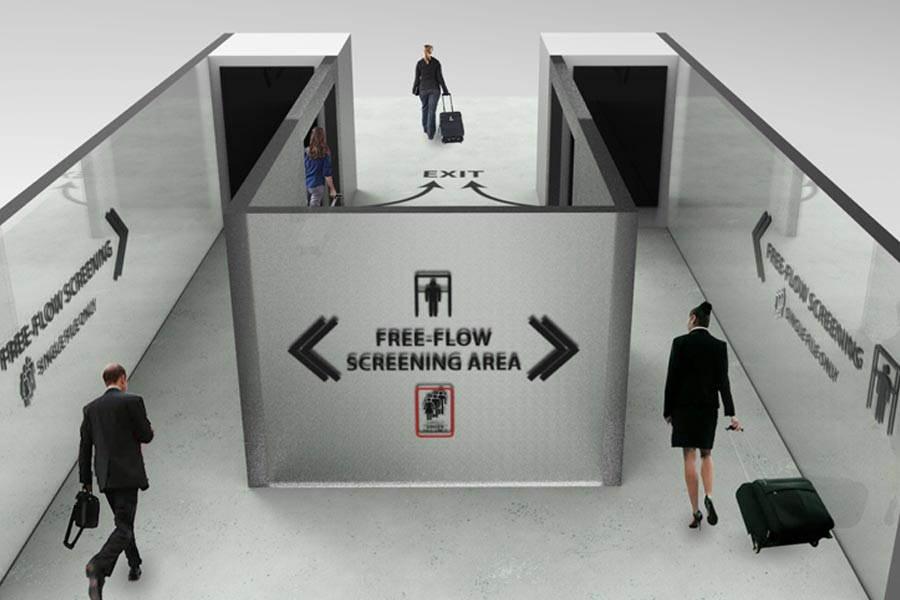The Challenge
Our client, the Department for Transport, awarded Plextek with the Transport Technology Research and Innovation Grant to conduct a research study into the improvement of aviation security and screening procedures at airport checkpoints.
Objects concealed on a person or in luggage are a threat in all public places and especially in airports. Methods currently used to image people and their hand luggage, such as x-ray and terahertz systems, require the subject to be stationery and cooperative. In turn, this leads to concerns related to equipment cost, measurement speed, screening safety, passenger congestion, and the possibility of perceived or actual discrimination.


The Approach
Plextek proposed a non-intrusive microwave camera capable of real-time imaging of hidden objects.
Low power microwaves are intrinsically safe to pass through the body and can characterise and detect a range of materials, including explosive devices and weapons. We therefore proposed a parabolic reflector system and modelled the design to support real-time imaging of people at a distance of two to four metres in the ‘free flow’ passenger channel.
The Approach
Plextek proposed a non-intrusive microwave camera capable of real-time imaging of hidden objects.
Low power microwaves are intrinsically safe to pass through the body and can characterise and detect a range of materials, including explosive devices and weapons. We therefore proposed a parabolic reflector system and modelled the design to support real-time imaging of people at a distance of two to four metres in the ‘free flow’ passenger channel.

The Outcome
Our solution provides a safe, low cost, technology where passengers can be channelled through a corridor, allowing them to walk freely while being scanned by the microwave camera and with less cost and disruption than previous technology.



